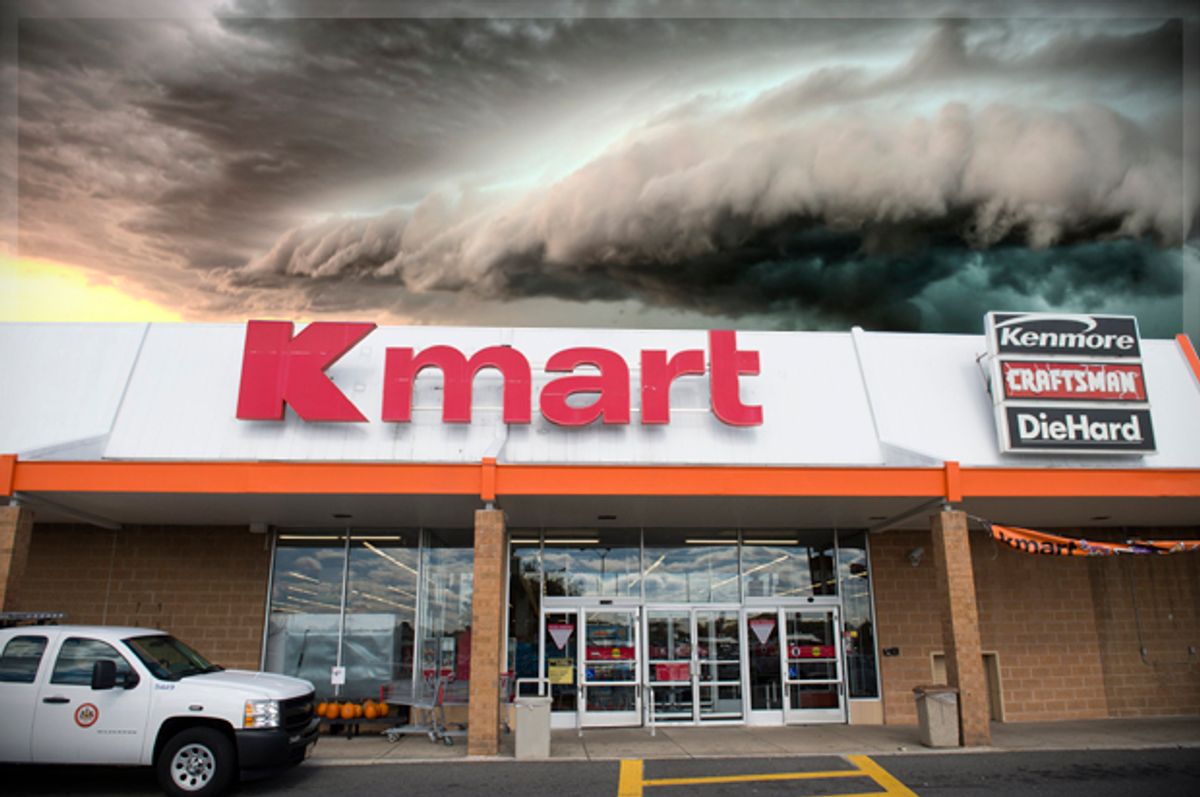Despite all the attention to the rise of online retail, physical stores remain a reliable shopping destination for U.S. consumers. More than 90 percent of all retail sales take place in brick-and-mortar outlets, making them the still-dominant mainstay of the American retail experience.
But that doesn’t mean all the big names in traditional merchandising are successfully adapting to changes in the way people shop. In recent years J.C. Penney, Kohl’s and Macy’s have been cutting back the number of their stores amid lower foot traffic. Office suppliers Staples and Office Depot are struggling against the onslaught of online suppliers. And in March Sports Authority, once the country’s largest sporting goods retailer, closed all its stores after failing to find a buyer.
In April Sears Holdings announced plans to shutter 68 Kmart stores — which was followed on Monday by a report that an additional 64 stores have been added to the list of outlets closing by Christmas. This adds up to 14 percent of Kmart stores nationwide slated to close this year. Parent company Sears Holdings wrapped up the last quarter that ended July 30 with about $276 million in cash and about $3.4 billion in long-term debt.
With the closing of retail spaces, should the underlying real estate be sold, new owners will emerge to potentially develop vacated properties. Billionaire Warren Buffett knows this, which is why in December he invested more than $70 million of his money in Seritage Growth Properties, a real estate company that Sears Holdings spun off last year in a bid to raise much-needed cash. Seritage, a real estate investment trust, has purchased more than 200 properties, with most of them being Kmart stores; thus Seritage has essentially become a landlord to Sears Holdings. Real estate investment trusts or REITs are securities often traded on stock exchanges; they allows people to invest in real estate without going through the time and effort of buying property directly.
Alexander Goldfarb, a senior REIT analyst at Sandler O’Neill & Partners, told Salon that despite troubles in pockets of the retail industry, brick-and-mortar stores aren’t going to disappear.
“When you look today at Tesla, Apple, some of the most tech-savvy retailers around are choosing to open stores at the mall,” Goldfarb said. “Amazon is opening brick-and-mortar stores. The country certainly has too much retail and there’s more retail that’s going to close, but at the same time people absolutely continuing to shop at physical stores.”
In a research note to investors last week RBC Capital Market retail analysts Rich Moore and James Bambrick said Seritage will benefit from Kmart’s store closings by collecting money from Sears Holdings with the termination of leases. “The company could turn a Kmart and its parking field into a shopping center,” they added.
As retailers close outlets, the REITs serving as landlords are raking it in. A report last month by Lazard Asset Management showed that returns on investment in regional retail properties and purely local venues have climbed 12 percent and 17 percent, respectively, so far this year. This is roughly in line with the 14 percent growth in all REITs. Since 2011, the five-year return on investment in retail-related REITs has more than doubled; it’s behind the return on industrial and self-storage property REITs but ahead of that for hotel, office space and apartments REITs.
Goldfarb said the key to putting tenants into vacated retail properties is for landlords to select the right type of commerce for the location. “There are certain retailer or retail categories that won’t be attractive to shopper in a specific area,” he said. “You wouldn’t put a gourmet grocery store in a certain area unless you see a trend.”



Shares